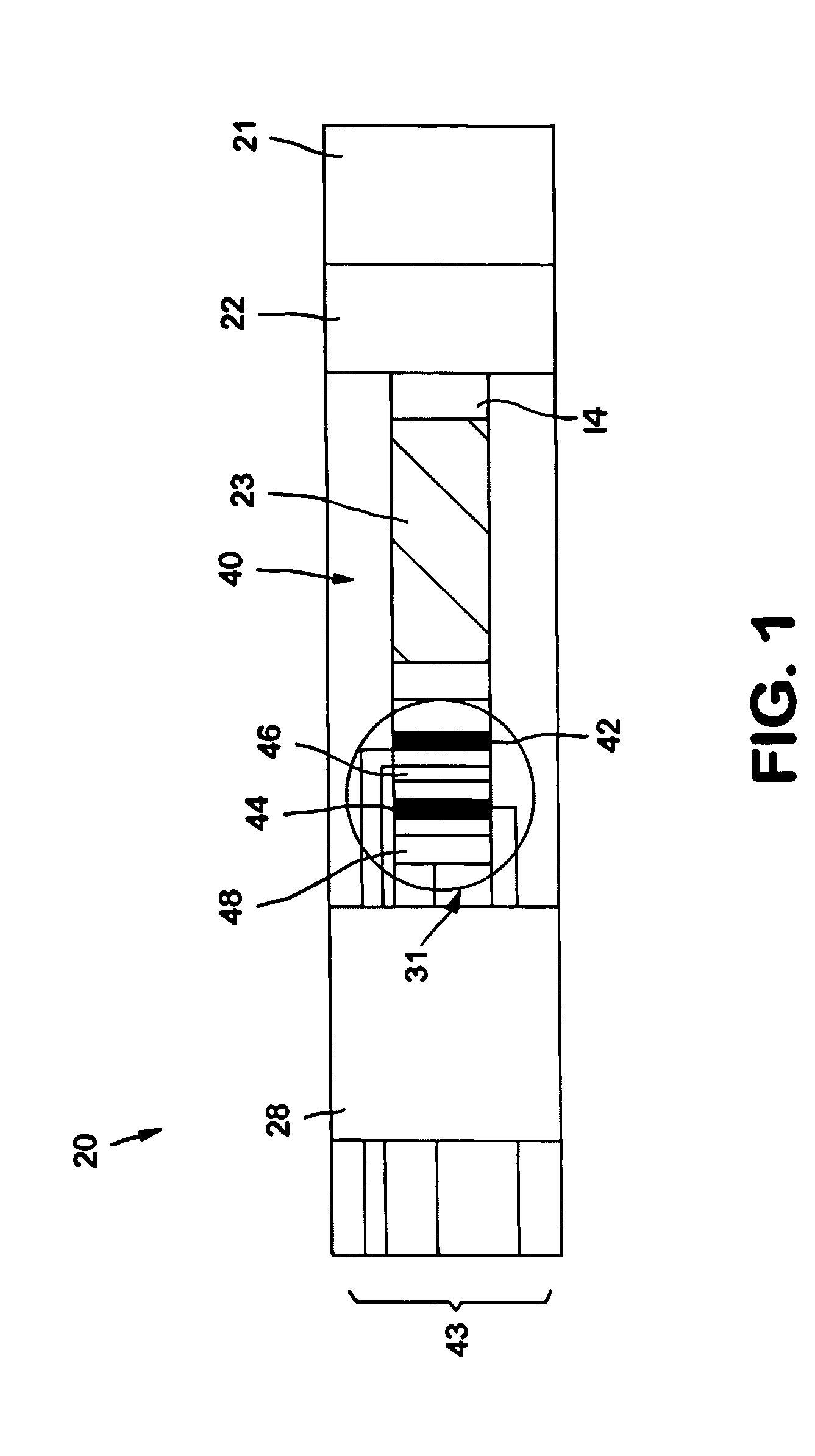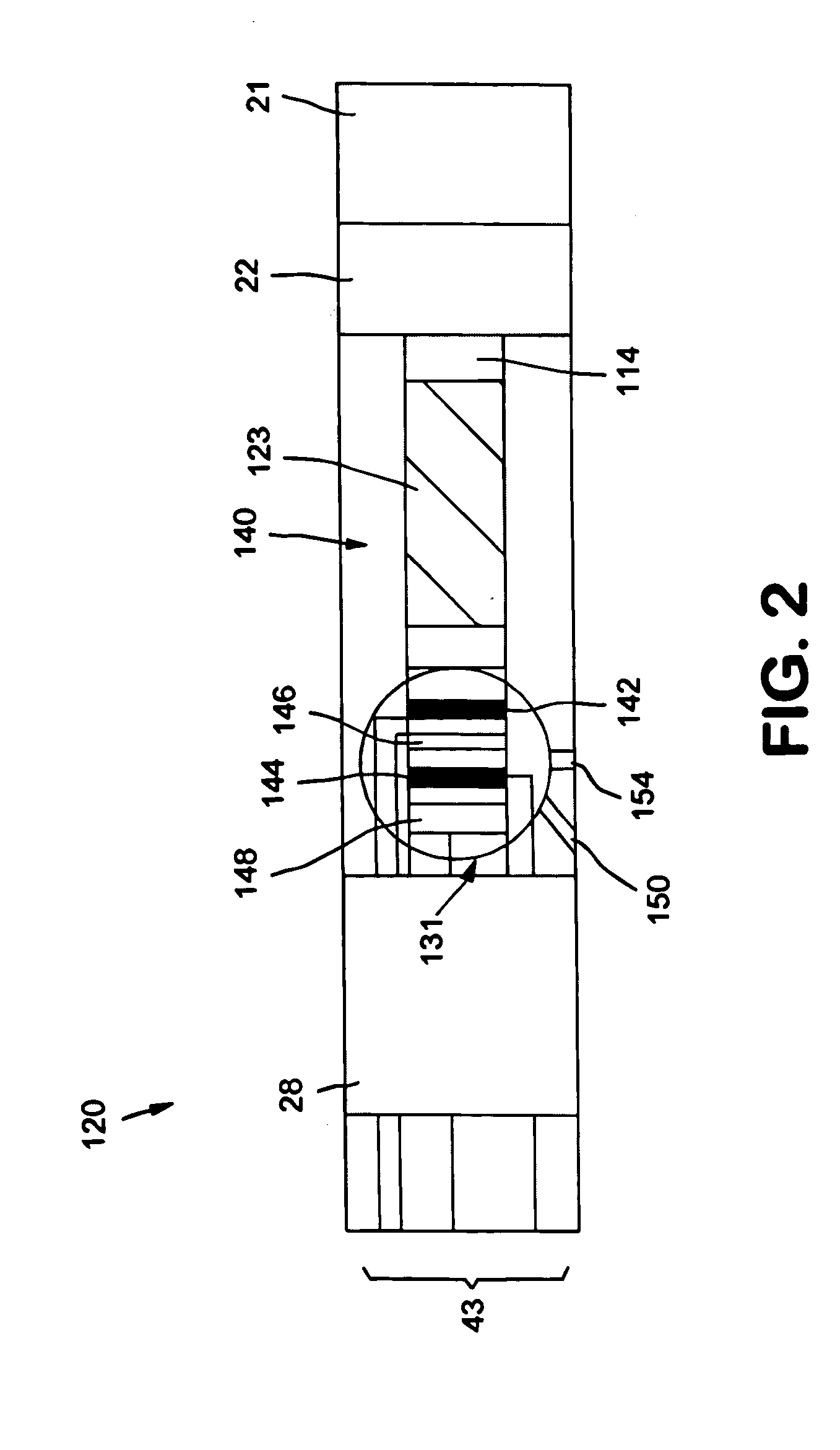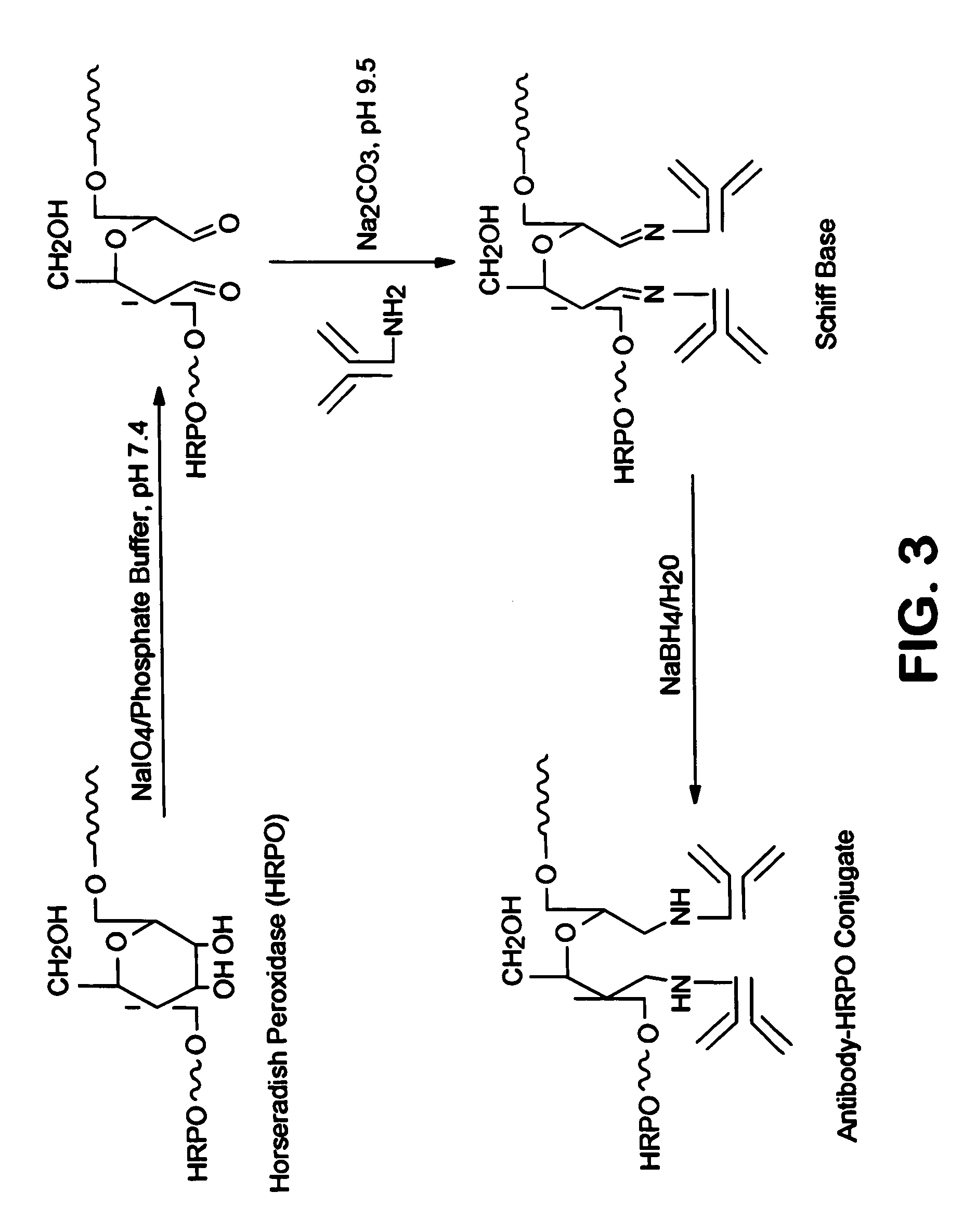Flow-through assay devices
a flow-through assay and electrode technology, applied in the field of analytical procedures and devices, can solve the problems of large sample volume, insufficient contact of the sample with the working electrode surface, and the flow-through electrochemical biosensors that are described above, and achieve the effect of facilitating the flow of the test sampl
- Summary
- Abstract
- Description
- Claims
- Application Information
AI Technical Summary
Benefits of technology
Problems solved by technology
Method used
Image
Examples
example 1
[0074] Electrodes were printed onto Mylar® substrates obtained from DuPont. The substrates had a length of 0.5 centimeters and a width of 1.5 centimeters. Carbon (7101 or 7102), silver (5000), and silver / silver chloride (5847) inks were obtained from DuPont Biosensor Group of Research Triangle Park, North Carolina. For printing the inks, a screen frame was first fixed onto a screen frame holder and adjusted. Initially, a silver ink line was printed on the substrate to enhance the conductivity between the printed leads and electrodes. Thereafter, carbon ink was printed over the silver ink line to form a detection working electrode, calibration working electrode, and counter electrode. The silver / silver chloride ink was printed onto the substrate to form a reference electrode. Leads for the electrodes were also printed. The resulting electrode strips were left at room temperature for 2 hours, and then heated at 37° C. for 2 hours. The temperature was then raised to 60° C. and dried an...
example 2
[0075] The ability to print flow channels onto the electrode strip of Example 1 was demonstrated. Specifically, an insulation layer and flow channel were then printed simultaneously onto the substrates using a UV-curable dielectric composition available from DuPont under the name “5018G.” Printing was performed with a screen printer available from Affiliated Manufacturers, Inc. (“AMI-Presco”) of North Branch, N.J. under the name “HC-53.” The screen frame utilized had a size of 5×7 inches, a mesh size of 80×0.0037 to 400×0.0007, and a stencil angle of 22 to 45 degrees. The insulation layer essentially covered the substrate area not otherwise covered by the electrodes, leads, or flow channels. The resulting flow channel had a length of 2.5 centimeters and a width of 0.5 centimeters. The height of the flow channel ranged from about 10 to about 150 micrometers, and was measured using a micrometer available from Mitutoyo America Corporation of Aurora, Ill. The insulation layer and channe...
example 3
[0076] Membrane strips of a nylon mesh membrane (30 mesh size, commercially available from Millipore Corp. of Billerica, Mass.) were provided that had a width of 4.5 centimeters and a length of 15 centimeters. To the bottoms of the strips, two glass fiber pads (sample and conjugate pads) were attached using tape. The conjugate pad was in direct contact with the membrane, and the sample pad was in direct contact with the conjugate pad. The conjugate pad was treated with 3 microliters of LH-α-HRP monoclonal antibody conjugate (5 micrograms per milliliter in PBS buffer) and dried for 30 minutes. The LH-α-HRP monoclonal antibody conjugate was obtained from Fitzgerald Industries Int'l of Concord, Mass. The membrane strips were placed onto a sampling instrument commercially available from Kinematic Automation of Twain Harte, Calif. under the name “Matrix 2210 (Universal Laminator).” Thereafter, the strips were cut into individual strips having a width ranging from 1 to 10 millimeters usin...
PUM
| Property | Measurement | Unit |
|---|---|---|
| height | aaaaa | aaaaa |
| height | aaaaa | aaaaa |
| height | aaaaa | aaaaa |
Abstract
Description
Claims
Application Information
 Login to View More
Login to View More - R&D
- Intellectual Property
- Life Sciences
- Materials
- Tech Scout
- Unparalleled Data Quality
- Higher Quality Content
- 60% Fewer Hallucinations
Browse by: Latest US Patents, China's latest patents, Technical Efficacy Thesaurus, Application Domain, Technology Topic, Popular Technical Reports.
© 2025 PatSnap. All rights reserved.Legal|Privacy policy|Modern Slavery Act Transparency Statement|Sitemap|About US| Contact US: help@patsnap.com



